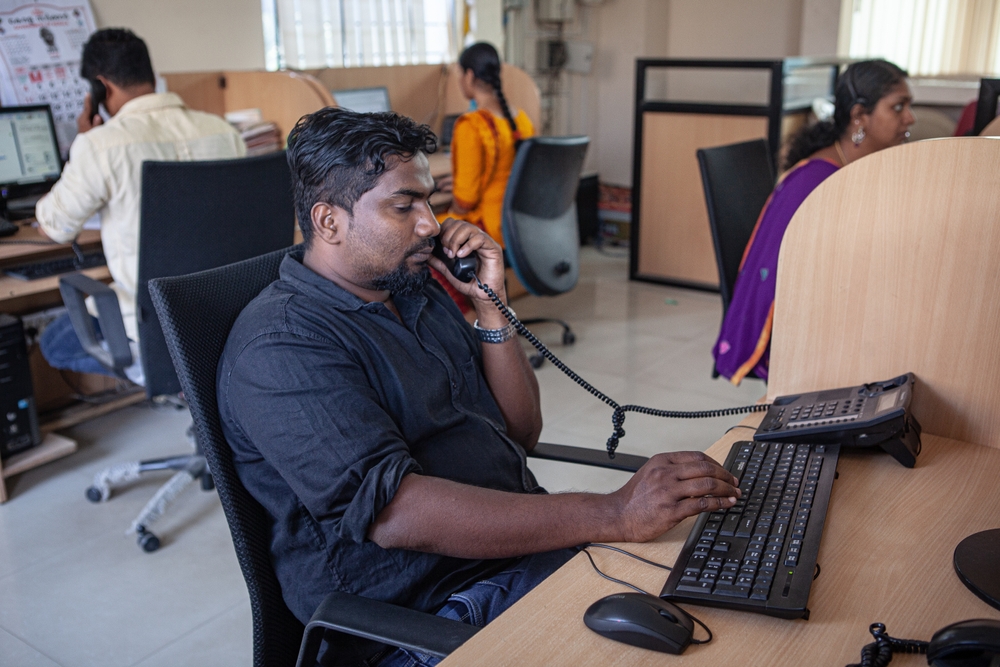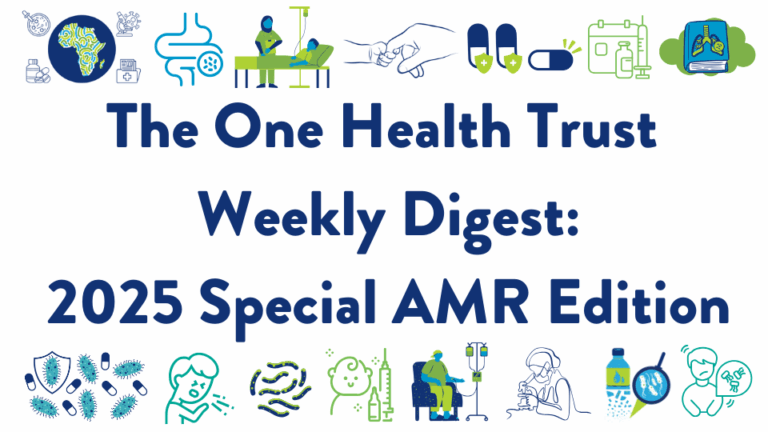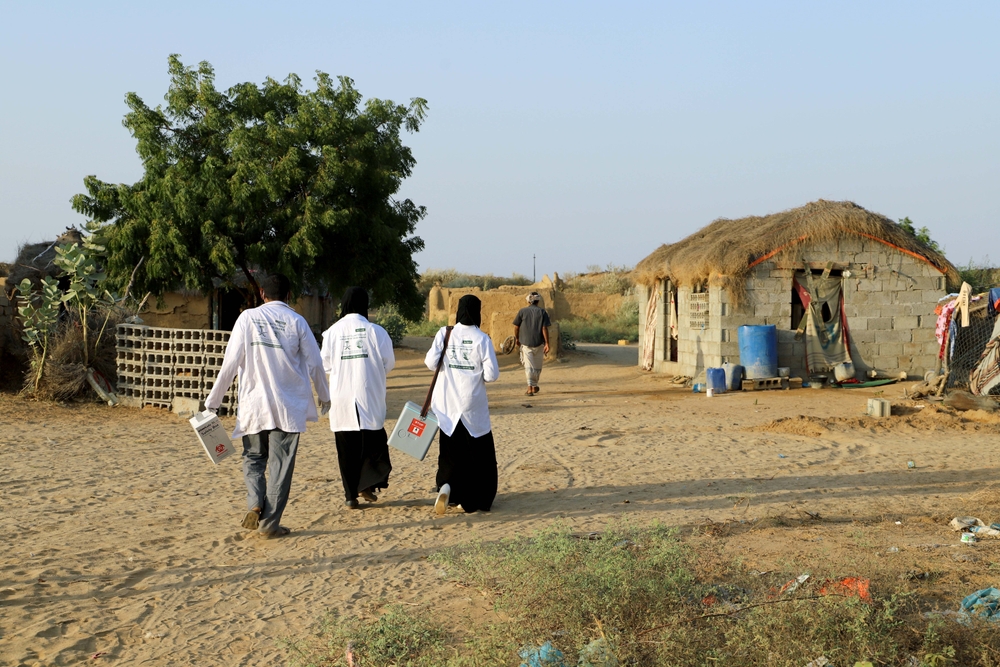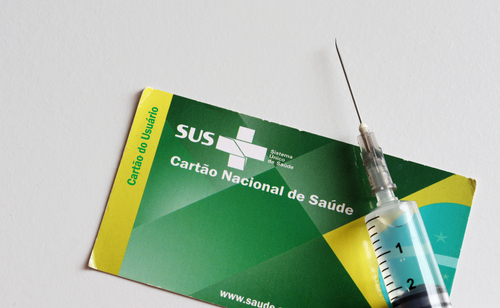September 18, 2024

Launch of WHO’s first guidance on managing antibiotic pollution from manufacturing
The World Health Organization released its first-ever guidance on managing antibiotic pollution from manufacturing. Reducing pollution from pharmaceutical waste is an important step in tackling antimicrobial resistance (AMR). With contributions from global experts, including OHT’s Dr. Ramanan Laxminarayan, the guidance aims to help regulators, manufacturers, and consumers take action. It promotes progressive implementation and stepwise improvement, recognizing the need to protect and strengthen the global supply of antibiotics and to ensure appropriate, affordable, and equitable access to quality-assured medicines. [World Health Organization]
Underdetection and declining immunity drive mpox transmission in the United States.
In a recent blog article, OHT researcher Nodar Kipshidze describes his research on the transmission dynamics of mpox in the United States. Mpox was recently implicated in an outbreak in the Democratic Republic of Congo and other African countries, prompting the World Health Organization to re-declare it as a public health emergency of international concern. Preliminary results suggest that a combination of underdetection and waning immunity are the key drivers of the virus’ persistence in the American population. [One Health Trust]
The need to leverage UNGA 2024 for action to control AMR
Dr. Evelyn Wesangula highlighted how AMR causes an estimated 5 million deaths annually, with a significant impact on low- and middle-income countries, particularly in sub-Saharan Africa. Progress since the 2016 United Nations General Assembly (UNGA) meeting on AMR remains inadequate, with most national action plans underfunded and insufficient laboratory capacity. The upcoming 2024 UNGA meeting must emphasize sustainable financing, multisectoral collaboration, and accountability, alongside promoting antibiotic research and development. Without urgent, coordinated action, AMR will continue to endanger public health, economies, and global stability. [One Health Trust]
Pneumococcal conjugate vaccines have direct and indirect disease prevention benefits in South Africa.
An observational study revealed that between 2005 and 2019, rates of the invasive pneumococcal disease (IPD) serotypes targeted by the 7- and 13-valent pneumococcal conjugate vaccines (PCV7 and PCV13) in children under the age of 2 years in South Africa declined by 95.5 percent and 93.8 percent, respectively. In contrast, the rates of non-vaccine IPD serotypes did not change significantly. Indirect benefits of the PCV7 and PCV13 among individuals too young or too old to receive the vaccine were also observed through overall reductions in the incidence of vaccine IPD serotypes. [The Lancet Global Health]
High susceptibility to imipenem among Enterobacterales isolates in companion animals in the United States
A retrospective analysis of antimicrobial susceptibility testing (AST) data found that susceptibility to imipenem among Enterobacterales isolates from companion cats and dogs in the United States was high at 98.86 percent. A space-time cluster analysis of the AST data showed relative stability in susceptibility while also identifying two high-risk clusters along the west coast (relative risk: 23.26) and in Texas (RR: 10.72) in June 2019, when the number of susceptible isolates markedly fell. [Journal of Veterinary Internal Medicine]
Mixed perceptions of pharmaceutical compounding and AMR among healthcare workers in Ethiopia
A cross-sectional, qualitative study of healthcare professionals at Pawi General Hospital in Ethiopia revealed varied perceptions of the contributions of pharmaceutical compounding (the creation of a pharmaceutical preparation to fit individual patient needs) to adverse drug events and antimicrobial resistance. More than half of respondents reported having prescribed or dispensed compounded medications. While all of these respondents believed their decision to do so was appropriate, 60.83 percent of all participating health professionals noted inadequate training or preparation to prescribe or dispense compounded medications. [Discover Health Systems]
Antibiotic use and C. difficile infection are positively correlated worldwide.
The global burden of Clostridioides difficile infection (CDI) has steadily increased over the past 30 years, with an age-standardized death rate that increased from 0.19 in 1990 to 0.43 in 2019. The highest burden of CDI is geographically concentrated in high- and middle-income regions. Women and older adults (over 67.5 years of age) experienced the most significant increases in deaths and disability-adjusted life-years, which correspond to growth in age. Notably, antibiotic consumption and CDI burden are highly correlated in most countries and regions, indicating a strong, widespread link between antibiotic use and CDI patterns. [Journal of Global Health]
The burden of enteric diseases decreased between 1999 and 2021.
Findings from the Global Burden of Disease Study 2021 demonstrated that the estimated annual percentage change in the age-standardized mortality rate and rate of disability-adjusted life-years (DALYs) due to enteric infections was -4.11 percent between 1990 and 2021, suggesting an overall decline in the burden of enteric diseases. A spatial analysis of these results revealed that countries with a lower socio-demographic index level, particularly those in western Africa, experience the greatest age-standardized DALY rate per 100,000 population. [Science in One Health]
Estimating the prevalence of maternal Group B Streptococcus colonization and vertical transmission in low- and middle-income countries
A prospective, observational study of HIV-negative pregnant women at 37 weeks of gestation or more in low- and middle-income countries in South Asia and Africa revealed an overall high prevalence of maternal Group B Streptococcus (GBS) colonization at 24.3 percent. The overall rate of vertical transmission of GBS from women with rectovaginal GBS colonization to their newborns was 72.3 percent. Existing literature has suggested that 1-2 percent of babies born to mothers with rectovaginal GBS colonization develop invasive GBS disease without intrapartum antibiotic prophylaxis, suggesting that newborns in the countries included in the study are at high risk for invasive GBS infection. [The Lancet Microbe]
A revised health benefits package in India resulted in increased service utilization among providers.
An analysis of service utilization after the revision of India’s health benefits package within India’s government-funded health insurance program found that modifications to the nomenclature, construct, and prices led to increased service uptake among providers in both private and public sectors in the state of Punjab. Notably, changes to both nomenclature and construct had a larger impact on service utilization (5.74 claim increase per package per month) than changes to either nomenclature (1.79 claim increase per package per month) or construct (0.34 claim increase per package per month) alone. [The Lancet Regional Health – Southeast Asia]
Drivers of high rates of AMR in Nigeria
In a call for action, Dr. Iruka Okeke, a co-author of The Lancet’s series on antimicrobial resistance (AMR), highlighted key factors that drive the high rates of AMR in Nigeria, including inappropriate antimicrobial prescribing and use, lack of incentives for antibiotic research and development (globally and in Nigeria), and inadequate infection prevention and control practices. Nigeria’s leaders will join other global forces at the United Nations General Assembly in September 2024. The upcoming September meeting provides an opportunity for governments to commit to the proposed “10-20-30” goal. That is a 10 percent reduction in AMR-related deaths, a 20 percent reduction in inappropriate use of antimicrobials for human health, and a 30 percent reduction in animal health, by 2030. [Nigeria Health Watch]
A pan-tuberculosis regimen would avert more deaths and save more money than the current standard of TB care.
According to modeling estimates, a pan-tuberculosis (TB) treatment regimen would lead to a 69-71 percent increase in newly diagnosed TB patients durably cured after one course of treatment in India, the Philippines, and South Africa compared to the current standard of care. The model also demonstrated that 30-32 percent of TB deaths and 17-20 percent of transmission (occurring after initial TB diagnosis) could be prevented under the novel regimen. The regimen could reduce non-drug costs by 32-42 percent and would be cost–saving at prices below US$170-340. [The Lancet Global Health]
Image from Shutterstock











